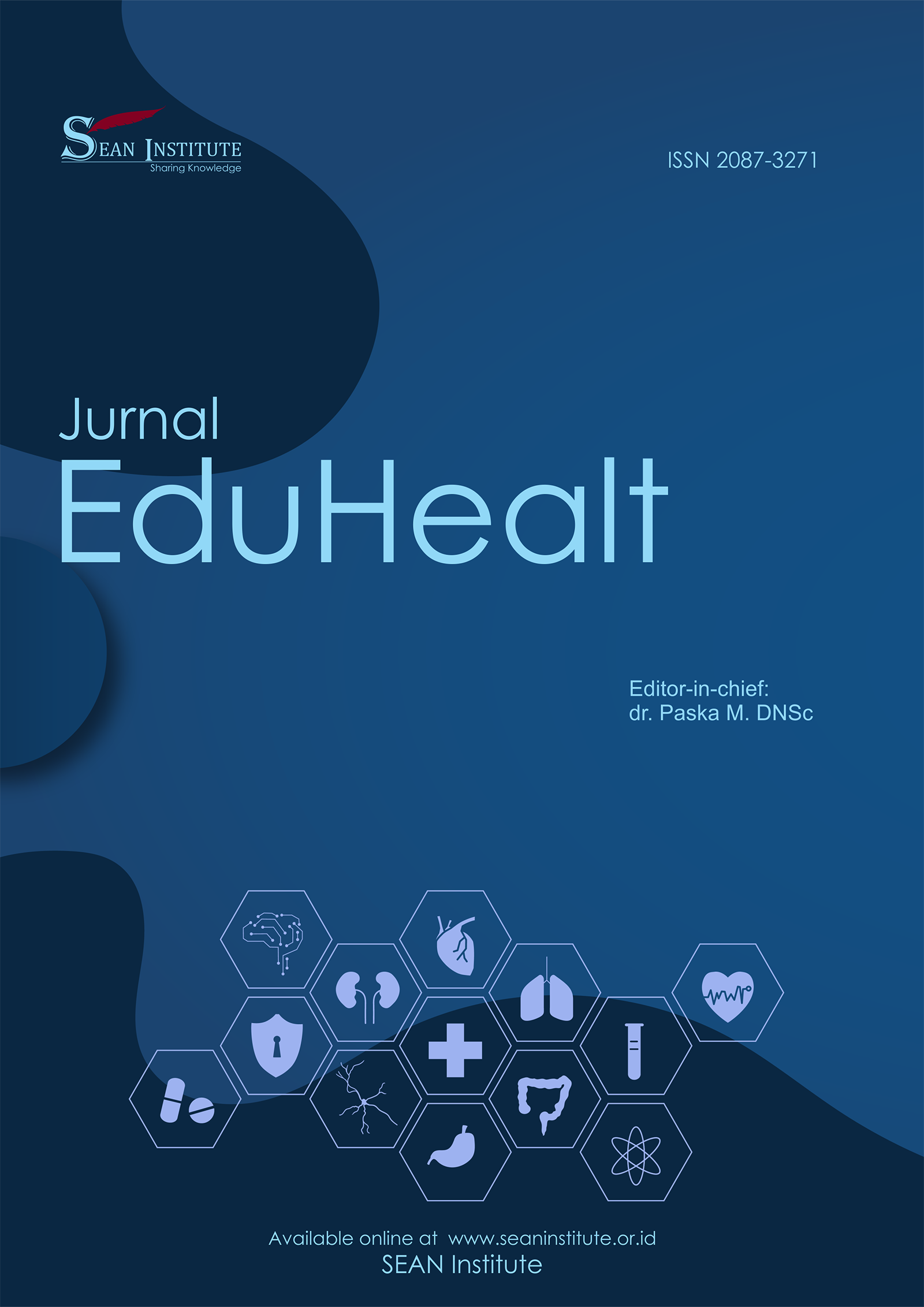Risk Analysis Of Disorders Due To Isoflurane Exposure Among Healthcare Workers In The Operating Room: A Case Study At Ananda Women And Children Hospital
Keywords:
Isoflurane, PPE, age, length of work, health problemsAbstract
Isoflurane is an inhalation anesthetic agent commonly used in clinical practice for the induction and maintenance of general anesthesia. Isoflurane has a depressant effect on the central nervous system, working by increasing the activation of inhibitory GABA receptors and reducing excitatory synaptic transmission. One of the key factors affecting the level of isoflurane exposure in the operating room is the room ventilation and air filtration system. Poor ventilation in the operating room can cause the concentration of anesthetic gases, such as isoflurane, to accumulate in the air, increasing the risk of exposure to health workers. Ineffective or inadequate ventilation systems may not be able to remove anesthetic gases released during surgical procedures, which can ultimately result in isoflurane exposure at hazardous levels. The purpose of this study was to identify and analyze the risk of health problems due to isoflurane exposure and to develop effective risk management to minimize the impact of isoflurane exposure on health workers in the operating room of RSIA Ananda and to analyze the existing operating room standards in the operating room of RSIA Ananda. The type of research that will be used in this study is quantitative research using a cross-sectional design. This study was conducted in the Operating Room of Ananda Mother and Child Hospital, Makassar from October to November 2024. The population and sample were all health workers on duty in the operating room of Ananda Mother and Child Hospital, which was 45 health workers. The results of this study indicate that of the 45 respondents who always use PPE and experience health problems such as nausea, which is 62.5% and with a P Value of 0.0612> 0.05, have never been exposed to isoflurane and experience nausea as much as 37.5% with a P Value of 0.030 <0.05, health workers who have worked for 1-5 years have a higher percentage of nausea, which is 66.7% with a P Value of 0.066> 0.05. While the age group 25-34 years as many as 70.8% experience nausea with a P Value of 0.0590> 0.05. The conclusion of the statistical analysis shows a significant relationship between the duration of isoflurane exposure and health problems in health workers, while the use of PPE, age and length of work do not have a significant relationship.
References
Afra, A., Mollaei Pardeh, M., Saki, H., Farhadi, M., Geravandi, S., Mehrabi, P., Dobaradaran, S., Momtazan, M., Dehkordi, Z., & Mohammadi, M. J. (2020). Anesthetic toxic isoflurane and health risk assessment in the operation room in Abadan, Iran during 2018. Clinical Epidemiology and Global Health, 8(1), 251–256.
https://doi.org/10.1016/j.cegh.2019.08.008.
Mills, D. J. (2021). The Aging GABAergic System and Its Nutritional Support. Journal of Nutrition and Metabolism, 2021.
https://doi.org/10.1155/2021/6655064
Mousavi, E. S., Kananizadeh, N., Martinello, R. A., & Sherman, J. D. (2021). COVID-19 Outbreak and Hospital Air Quality: A Systematic Review of Evidence on Air Filtration and Recirculation. Environmental Science and Technology, 55(7), 4134–4147. https://doi.org/10.1021/acs.est.0c03247
Nie, C., Ding, X., A, R., Zheng, M., Li, Z., Pan, S., & Yang, W. (2021). Hydrogen gas inhalation alleviates myocardial ischemia-reperfusion injury by the inhibition of oxidative stress and NLRP3-mediated pyroptosis in rats. Life Sciences, 272(January), 119248. https://doi.org/10.1016/j.lfs.2021.119248
Syahrial, M. (2021). Kebutuhan Dasar Manusia Menurut Ekonomi Islam. IndraTech, 2(1), 51–61.
https://doi.org/10.56005/jit.v2i1.47
Andres-Mateos, E., Landegger, L. D., Unzu, C., Phillips, J., Lin, B. M., Dewyer, N. A., Sanmiguel, J., Nicolaou, F., Valero, M. D., Bourdeu, K. I., Sewell, W. F., Beiler, R. J., McKenna, M. J., Stankovic, K. M., & Vandenberghe, L.H. (2022). Choice of vector and surgical approach enables efficient cochlear gene transfer in nonhuman primate. Nature Communications, 13(1).
https://doi.org/10.1038/s41467-022- 28969-3
Apfelbaum, J. L., Hagberg, C. A., Connis, R. T., Abdelmalak, B. B., Agarkar, M., Dutton, R. P., Fiadjoe, J. E., Greif, R., Klock, P. A., Mercier, D., Myatra, S. N., O’Sullivan, E. P., Rosenblatt, W. H., Sorbello, M., & Tung, A. (2022). 2022 American Society of Anesthesiologists Practice Guidelines for Management of the Difficult Airway. In Anesthesio
Agresti, A., et al. (2022). Effects of Chronic Isoflurane Exposure on Healthcare Workers. Journal of Occupational Health, 64(3), 345-352
Chavez-Monteagudo, J. R., Ibancovichi, J. A., Sanchez-Aparicio, P., Recillas- Morales, S., Osorio-Avalos, J., & De Paz-Campos, M. A. (2022). Minimum Alveolar Concentration of Isoflurane in Rats Chronically Treated with the Synthetic Cannabinoid WIN 55,212-2. Animals, 12(7), 1–7.
https://doi.org/10.3390/ani12070853
Johnson, M., & Carter, H. (2022). Occupational Hazards in Operating Rooms: Minimizing Isoflurane Exposure through Engineering Controls. Anesthesia and Analgesia, 135(1), 125–133. doi:10.1213/ane.135.2022
Müller-Wirtz, L. M., Behne, F., Kermad, A., Wagenpfeil, G., Schroeder, M., Sessler, D. I., Volk, T., & Meiser, A. (2022). Isoflurane promotes early spontaneous breathing in ventilated intensive care patients: A post hoc subgroup analysis of a randomized trial. Acta Anaesthesiologica Scandinavica, 66(3), 354–364. https://doi.org/10.1111/aas.14010
National Institute for Occupational Safety and Health (NIOSH). (2022). Occupational Exposure Limits for Healthcare Workes
Prasetyo, T., & Hidayat, R. (2022). Analisis Paparan Gas Anestesi terhadap Kesehatan Tenaga Medis di Rumah Sakit Indonesia. Jurnal Teknologi Kesehatan, 11(3), 120–130. doi:10.25105/jtk.2022.11

















